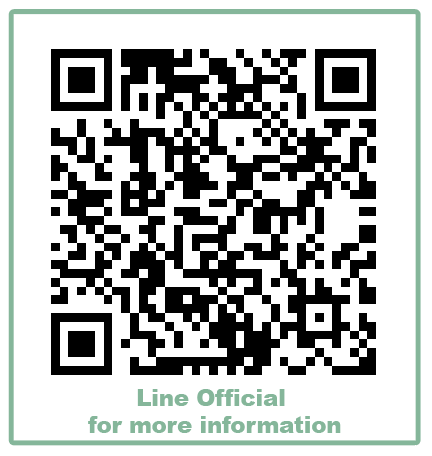STEM Education using Contexts Outdoor : A New Dimension in Developing Creative Problem-solving Competencies
DOI:
https://doi.org/10.14456/jescu.2025.2Keywords:
STEM education, outdoor STEM education, creative problem-solving competenciesAbstract
The purposes of this research were: 1) to study the effects of outdoor STEM education on creative problem-solving competencies, and 2) to study the best practices in outdoor STEM education to develop creative problem-solving competencies. The sample consisted of 9th-grade students. The research approach used for this study is action research. Data was gathered from various sources, including the teacher’s and students’ reflective journals, student tasks, and a creative problem-solving skills test, which demonstrated an internal consistency reliability of 0.82. Qualitative data was analyzed using inductive analysis, while quantitative data was analyzed using descriptive statistics which are mean and percentage. The study found that the best practices for using outdoor STEM education involved: applying steps from the engineering design process to select questions connected with contexts outside the classroom, connecting the studied concepts to real contexts, creating and selecting ideas through various techniques using natural materials, and solving problems along with testing and improving tasks to significantly enhance students' creative problem-solving skills in all areas.
References
ภาษาไทย
ชำนิ จิตตรีประเสริฐ. (2543). พัฒนาคุณภาพด้วยความคิดสร้างสรรค์. สถาบันพัฒนาและรับรองคุณภาพโรงพยาบาล.
เรืองชัย พจนี และ ต้องลักษณ์ บุญธรรม. (2564). ความต้องการจำเป็นของการพัฒนาการจัดการเรียนรู้สะเต็มศึกษาสำหรับครูมัธยมศึกษา จังหวัดนครนายก. วารสารศิลปศาสตร์ ราชมงคลสุวรรภูมิ, 3(3), 285-299. https://so03.tci-thaijo.org/index.php/art/article/view/254666
วรกันยา แก้วกลม, พินิจ ขำวงษ์, และ จรรยา ดาสา. (2561). สภาพปัจจุบันและความต้องการในการจัดการเรียนรู้สะเต็มศึกษาของครูวิทยาศาสตร์ระดับชั้นประถมศึกษา. วารสารศึกษาศาสตร์ มหาวิทยาลัยศิลปากร, 11(3), 2092-2112. https://he02.tci-thaijo.org/index.php/Veridian-E-Journal/article/view/159293/115213
วิเชียร เบญจวัฒนา และ สมชัย อัครทิวา. (2545). Why why analysis = เทคนิคการวิเคราะห์อย่างถึงแก่นเพื่อปรับปรุงสถานประกอบการ. สมาคมส่งเสริมเทคโนโลยี.
ศิริชัย กาญจนวาสี. (2556). ทฤษฎีการทดสอบแบบดั้งเดิม. โรงพิมพ์แห่งจุฬาลงกรณ์มหาวิทยาลัย.
สุกัญญา เชื้อหลุบโพธิ์. (2560). การจัดการเรียนรู้โดยใช้กระบวนการออกแบบเชิงวิศวกรรมตามแนวคิดสะเต็มศึกษา เพื่อพัฒนาความคิดสร้างสรรค์ เรื่อง การเคลื่อนที่แบบหมุน ของนักเรียนชั้นมัธยมศึกษาปีที่ 4. วารสารวิชาการและวิจัยสังคมศาสตร์ มหาวิทยาลัยนเรศวร, 13(37), 119-132. https://so05.tci-thaijo.org/index.php/JSSRA/article/view/92815/96865
อรนุช ลิมตศิริ. (2563). การจัดกิจกรรมการเรียนรู้นอกห้องเรียนสำหรับเด็ก. วารสารมนุษยศาสตร์และสังคมศาสตร์ มหาวิทยาลัยราชภัฏบ้านสมเด็จเจ้าพระยา, 15(1), 214-237. https://so08.tci-thaijo.org/index.php/jhusocbru/article/view/1648/1301
อารี พันธ์มณี. (2540). ความคิดสร้างสรรค์ (พิมพ์ครั้งที่ 3). โรงพิมพ์ข้าวฟ่าง.
ภาษาอังกฤษ
Bybee, R. W. (2013). The case for STEM education: Challenges and opportunities. NSTA.
Creative Education Foundation. (2014). Educating for creativity level 1 resource guide. Watch Hill Drive.
Crompton, H. (2020). Contextualizing STEM learning: Frameworks & strategies. Research on Outdoor STEM Education in the Digital Age, 6, 13-22. https://doi.org/10.37626/ga9783959871440.0.02
Guardino, C., Hall, K. W., Largo-Wight, E., & Hubbuch, C. (2019). Teacher and student perceptions of an outdoor classroom. Journal of Outdoor and Environmental Education, 22, 113-126. https://doi.org/10.1007/s42322-019-00033-7
Howard, T. J., Culley, S. J., & Dekoninck, E. (2008). Describing the creative design process by the integration of engineering design and cognitive psychology literature. Design Studies, 29(2), 160-180. https://doi.org/10.1016/j.destud.2008.01.001
Hungerford, H. R., & Volk, T. L. (1990). Changing learner behavior through environmental education. The Journal of Environmental Education, 21(3), 8-21. https://doi.org/10.1080/00958964.1990.10753743
Khwaengmek, V., Pitiporntapin, S., Pimthong, P., & Bukatunyoo, O. (2021). Perceptions of pre-service teachers about outdoor learning for STEM Education in early childhood education. Journal of Physics: Conference Series. 1957, 012018. https://doi.org/10.1088/1742-6596/1957/1/012018
Mangold, J., & Robinson, S. (2013). The engineering design process as a problem-solving and learning tool in K-12 classrooms. eScholarship. https://escholarship.org/uc/item/8390918m
Moomaw, S. (2013). Teaching STEM in the early years: Activities for integrating science, technology, engineering, and mathematics. Redleaf.
OECD. (2014). PISA 2012 results: Creative problem solving (Volume V): Students’ skills in tackling real-life problems. https://doi.org/10.1787/9789264208070-en
President’s Council of Advisors on Science and Technology (PCAST). (2010). Prepare and inspire: K-12 education in science, technology, engineering, and math (stem) for America’s future. National Science Foundation. https://www.nsf.gov/attachments/117803/public/2a--Prepare_and_Inspire--PCAST.pdf
Son, J. S., Mackenzie, S. H., Eitel, K., & Luvaas, E. (2017). Engaging youth in physical activity and STEM subjects through outdoor adventure education. Journal of Outdoor and Environmental Education, 20, 32-44. https://doi.org/10.1007/BF03401012
Sugimoto, A. T., Turner, E. E. & Stoehr, K. J. (2017). A case study of dilemmas encountered when connection middle school mathematics instruction to relevant real world examples. Middle Grades Research Journal, 11(2), 61-82. https://scholarcommons.scu.edu/tepas/77/
Teach Engineering STEM Curriculum for K-12. (2018). Engineering design process. https://www.teachengineering.org/populartopics/designprocess
Treffinger, D. J. (2007). Creative problem solving (CPS): Powerful tools for managing change and developing talent. Gifted and Talented International, 22(2), 8-18. https://doi.org/10.1080/15332276.2007.11673491
Treffinger, D. J., Isaksen, S. G., & Stead-Dorval, K. B. (2005). Creative problem solving: An introduction (4th ed), Prufrock.
Downloads
Published
How to Cite
Issue
Section
License

This work is licensed under a Creative Commons Attribution-NonCommercial-NoDerivatives 4.0 International License.




